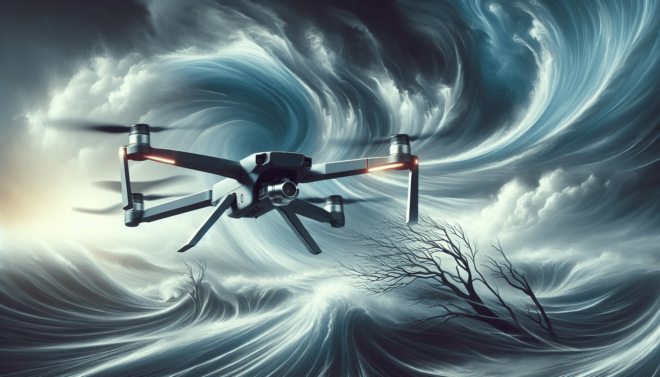Have you ever found yourself wondering how your drone might perform in less-than-perfect weather conditions? If you’ve recently purchased a DJI Neo or are considering this model, you’re likely curious about how it handles windy situations. Flying drones can be an exhilarating experience, yet it’s vital to ensure they’re equipped to manage unexpected or challenging weather conditions effectively. Let’s look at how the DJI Neo manages when the wind picks up.
Understanding the DJI Neo’s Design and Features
When evaluating any drone’s capability to withstand windy conditions, it’s essential to consider its design and specifications. The DJI Neo, like many DJI products, is designed to offer a balance between performance and ease of use, making it popular among hobbyists and experienced flyers alike.
Key Features of the DJI Neo
The DJI Neo boasts several features that contribute to its stability and control:
-
Compact Size and Lightweight Design: With a sleek and manageable frame, the DJI Neo is designed for portability, making it an excellent option for travel. However, its size could also affect how it handles wind.
-
Advanced Stabilization Technology: This drone includes a state-of-the-art stabilization system that helps maintain steady footage even in less-than-ideal conditions.
-
Powerful Motors and Batteries: Equipped with high-performance motors and batteries, the DJI Neo is built to maintain long flight times and powerful lift, essential for overcoming wind resistance.
The Importance of Flight Technology
DJI Neo incorporates cutting-edge flight technologies, including GPS-assisted hover, which is crucial for maintaining position when subjected to wind. These features are not only integral for new users but also enhance the experience for seasoned drone enthusiasts, ensuring a smoother flight.
Assessing Wind Conditions for Drone Flight
Understanding how your drone interacts with windy environments requires a basic comprehension of wind conditions. What constitutes safe wind speeds for flying, and how can you gauge when it’s too risky to launch your DJI Neo?
What Wind Speed Can the DJI Neo Handle?
The DJI Neo is designed to withstand moderate wind levels, typically up to a certain speed. Generally, consumer drones like the DJI Neo can handle wind speeds up to 28-35 mph (approximately 12-15 m/s). However, flying in the upper thresholds of this range might require extra manual adjustments for stability.
Evaluating Wind Conditions
You should check local weather reports or use specialized apps to gauge wind conditions before flight. Pay attention to sustained winds and gusts, as gusts can often be more disruptive than consistent winds. Here’s a simple table to help you assess wind conditions:
| Wind Speed (mph) | Conditions | Advice |
|---|---|---|
| 0-10 | Calm | Ideal for flying |
| 11-20 | Moderate | Generally safe, but remain cautious |
| 21-35 | Strong | Fly with expert caution |
| 36+ | Excessive | Avoid flying |
Effects of Wind on Flight Dynamics
Higher wind speeds can impact battery life, drone stability, and image capture quality significantly. Understanding your DJI Neo’s response to wind helps anticipate and counter potential mishaps during flight.
Practical Tips for Flying the DJI Neo in Windy Conditions
Now that you know your DJI Neo can potentially handle moderate wind conditions, it’s wise to prepare adequately. These practical tips can help you fly safely and maintain control even when the wind picks up.
Pre-Flight Preparations
Before launching your DJI Neo, ensure all systems are functioning correctly. This includes checking your drone’s firmware updates, calibrating the compass, and fully charging the batteries. Equally important is conducting a physical inspection of the propellers and frame to ensure there are no damages or loose parts.
Flight Adjustments in Wind
When flying in windy conditions, you might need to adjust the drone’s settings and your flight strategy:
-
Adapt the Altitude: Increase or decrease the drone’s altitude to find a layer with less disruptive wind currents. Lower altitudes may offer more natural wind breaks from terrain.
-
Smooth Manoeuvring: Abrupt movements can destabilize the drone in windy conditions. Make slow, deliberate movements to maintain balance.
-
Face into the Wind: When possible, orient your drone to face into the wind while flying to improve aerodynamics and retain stability.
During Flight: Maintaining Control and Safety
Continuously monitor battery levels, especially when the wind picks up, as flying against the wind can drain your power faster. Be prepared to bring the drone back immediately if the battery drops unexpectedly. Have a clear return plan and ensure the “Return to Home” function is set accurately before takeoff.
Emergency Procedures
In the case of a loss of control, it’s crucial to remain calm. Keep a close eye on the drone’s position and consider activating the emergency stop if needed. Furthermore, practical simulations before flight can prepare you well for any sudden, stormy surprises.
Summarizing the DJI Neo’s Performance
Understanding your DJI Neo’s strengths and limitations in windy conditions will enhance your overall flying experience. This drone, equipped with essential stabilizing technology and power, is suited for moderately windy days. However, always prioritize safety and exercise caution by staying informed on current weather conditions.
Final Thoughts on Flying in Wind
Flying your DJI Neo on a calm day offers a chance to experience the joys of smooth and stable drone flight. Yet, with the knowledge and preparation detailed here, you’ll be well-equipped to take to the skies even when the wind tries to steal the show. As with all drone flying activities, your safety and the safety of those around you should always be at the forefront of your mind.

